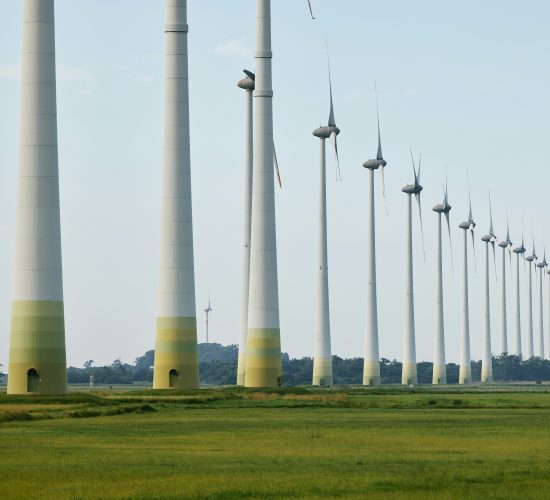Green Giants: The Rise of Solar and Wind Power in the Energy Arena

Renewable energy sources like solar and wind power have emerged as the frontrunners in reshaping the global energy landscape. These green giants challenge traditional fossil fuel dominance, offering sustainable, efficient, and economically viable alternatives. As the world grapples with climate change, the rise of solar and wind power signals a transformative shift in the energy sector.
Breaking Free from Fossil Fuels
For decades, fossil fuels like coal, oil, and natural gas have been the backbone of global energy production. However, growing environmental concerns and volatile markets have revealed their limitations. Solar and wind power offer a clear path forward by providing cleaner energy solutions. This shift gained momentum as technological advancements made renewable energy systems more efficient and cost-effective.
Moreover, governments and corporations have recognized the urgent need to reduce greenhouse gas emissions. Initiatives like the Paris Agreement have encouraged nations to transition to greener energy sources, making solar and wind power integral to achieving climate goals. With the cost of renewable energy falling significantly over the past decade, the barriers to adoption have diminished, accelerating this transition.
Advancements in Solar Technology
The solar power industry has seen remarkable innovations in recent years. From developing high-efficiency photovoltaic cells to integrating solar panels into everyday infrastructure, the potential for solar energy seems limitless. For instance, researchers are now exploring perovskite solar cells, which promise to deliver greater efficiency at lower costs than traditional silicon-based cells.
Furthermore, energy storage technologies, such as advanced lithium-ion batteries, have bolstered solar power’s reliability. By storing excess energy generated during the day for use at night, these systems address one of solar energy’s primary challenges—its intermittent nature. Consequently, these advancements have made solar power a viable option for residential and commercial use, further fueling its adoption.
Harnessing the Wind’s Power
Wind power has also carved out a prominent place in the renewable energy sector. Onshore and offshore wind farms are expanding rapidly, delivering clean energy to millions of households. Technological improvements have significantly increased the efficiency and capacity of wind turbines, enabling them to generate more power even in low-wind conditions.
In addition to technological progress, the strategic placement of wind farms has enhanced their effectiveness. Offshore wind farms, for instance, benefit from more substantial and consistent winds, making them highly productive. Moreover, the scalability of wind projects allows for flexible integration into existing energy grids, contributing to their widespread appeal.
Economic Benefits of Renewable Energy
The rise of solar and wind power is an environmental victory and an economic one. Renewable energy projects create thousands of jobs, from manufacturing and installation to maintenance and research. In regions previously reliant on fossil fuels, transitioning to renewables has provided a much-needed economic boost, diversifying local economies.
The declining costs of solar panels and wind turbines have made renewable energy more accessible to developing countries. This affordability allows nations with limited resources to invest in sustainable energy infrastructure, reducing their dependence on imported fossil fuels. As a result, solar and wind power are leveling the playing field in the global energy market, fostering greater energy independence.
Overcoming Challenges
Despite their many advantages, solar and wind power face particular challenges. One major hurdle is the intermittent nature of these energy sources. Solar panels cannot generate electricity at night, and wind turbines require consistent wind to operate efficiently. However, advancements in energy storage systems, such as grid-scale batteries and pumped hydro storage, are helping to address these issues.
Another challenge is the initial investment required for renewable energy projects. While costs have decreased over time, large-scale deployment still demands significant capital. To overcome this, governments and private investors offer incentives, subsidies, and grants, making renewable energy projects more financially viable.
The Role of Policy and Collaboration
Supportive policies and international collaboration have played a crucial role in the rise of solar and wind power. Governments worldwide have implemented renewable energy targets, tax credits, and feed-in tariffs to encourage the adoption of green energy. For example, the European Union’s Green Deal and the United States’ Inflation Reduction Act have prioritized investments in renewable energy infrastructure.
At the same time, global cooperation has facilitated knowledge sharing and technological innovation. Countries are working together to develop solutions for everyday challenges, such as integrating renewables into existing power grids. These collaborative efforts accelerate the transition to a cleaner, more sustainable energy future.
Building a Sustainable Future
The rise of solar and wind power represents a monumental shift in how the world generates and consumes energy. By reducing reliance on fossil fuels, these renewable sources are helping to combat climate change, promote economic growth, and ensure energy security. As technology advances, the potential for solar and wind power will only grow, further solidifying their role in global energy.
Ultimately, the success of these green giants depends on continued investment, innovation, and collaboration. By embracing their opportunities, society can pave the way for a sustainable future powered by clean, renewable energy.
Additional Information
- Blogs
- role in global energy, solar and wind power
- David Hastings